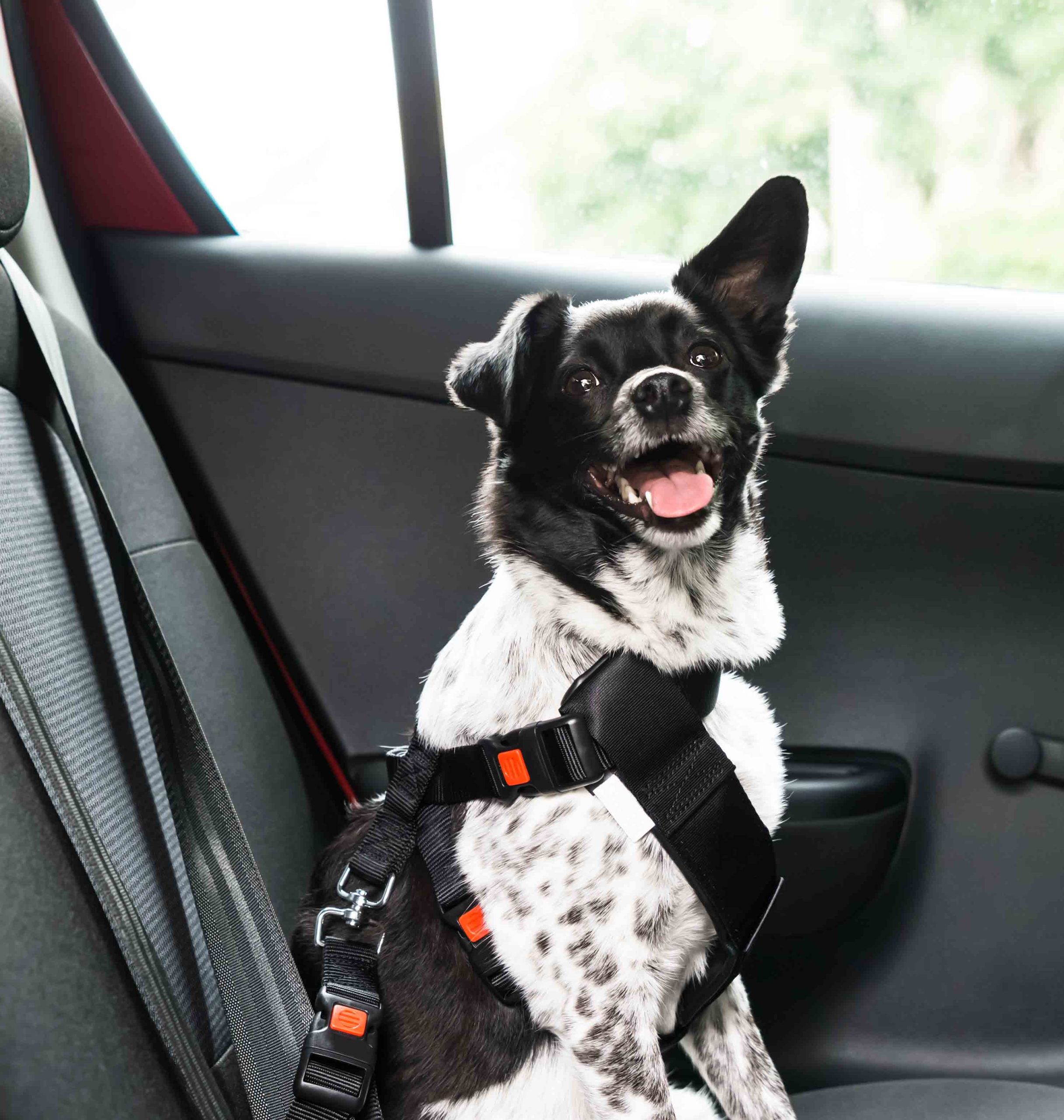
Show your pets you care by keeping them safe in the car, says GEM
Road safety and breakdown organisation GEM Motoring Assist is encouraging pet owners to ensure their animals are safe on car journeys.
Keep them secure
GEM advises against allowing dogs to sit on someone’s lap or to have their head out of the window on a journey. In the event of a collision, a small dog such as a terrier could be hurled at the head of someone sitting in the front of the car like a canine cannonball.
The Highway Code (Rule 57) says: “When in a vehicle make sure dogs or other animals are suitably restrained so they cannot distract you while you are driving or injure you, or themselves, if you stop quickly. A seat belt harness, pet carrier, dog cage or dog guard are ways of restraining animals in cars.”
If your dog is a large breed, such as a labrador, it could be catapulted through the car with the force of a baby elephant, injuring all in its way. In both cases it is unlikely that the dog, or the human occupants, would survive such a violent impact, according to GEM.
“It wouldn’t be acceptable to let a child sit on someone’s lap during a journey, and the same principle applies for dogs,” says a GEM spokesperson.
“They need to be kept secure in the car so they can’t distract the driver and won’t get catapulted around the vehicle if there’s a collision or a sudden need to make an emergency stop.”
Don’t fight them
If your dog becomes too vocal in the car, GEM says it’s important to do your best to ignore any barking while you’re driving. Don’t shout at them to be quiet or calm down, as this just tells the dog he’s got your attention. Instead, keep the dog in the car until the barking or whining has finished, so you’re rewarding silence.
Top tips for trouble-free journeys:
GEM has compiled a short checklist designed to ensure dogs stay safe and comfortable on car journeys:
- If you travel regularly with a dog you should invest in a pet carrier, dog guard, pet seatbelt or travel crate. The crate is the safest option, especially for larger animals.
- If your dog hates car journeys, get him used to short trips first, then offer a treat or a long walk.
- Park in the shade, but remember that even a short period in a hot car can make your dog seriously ill.
- If you see a dog inside a car and are concerned about his welfare, try to alert the owner. If this is not possible, contact the police or the RSPCA via their 24-hour helpline (0300 1234 999).
If you do travel regularly with a dog you should invest in a pet carrier (ideal for cats and small pets too, but should not simply be left unrestrained on the rear seat), dog guard, pet seatbelt or travel crate. The crate is the safest option, especially for larger dogs, but does depend on the type and size of your car – it is best suited to estate models. A dog guard works best in hatchbacks, but must be securely fitted in order to protect all occupants. Whereas pet seatbelts can be used in any car, but may take an older dog some time to get used to.
